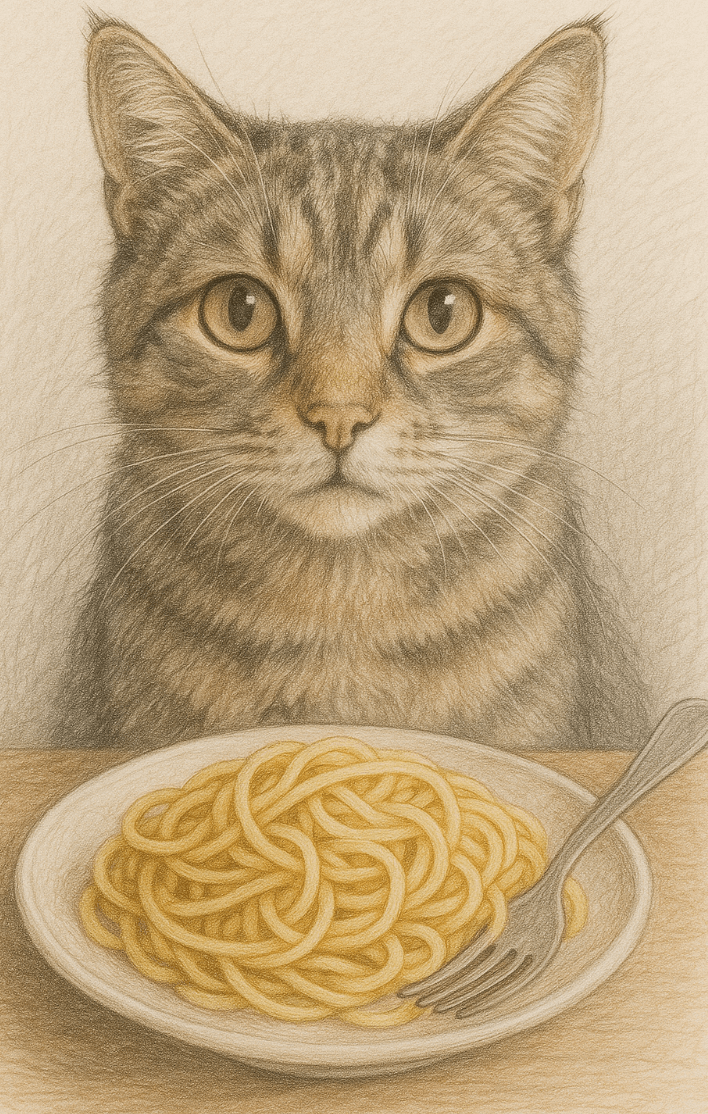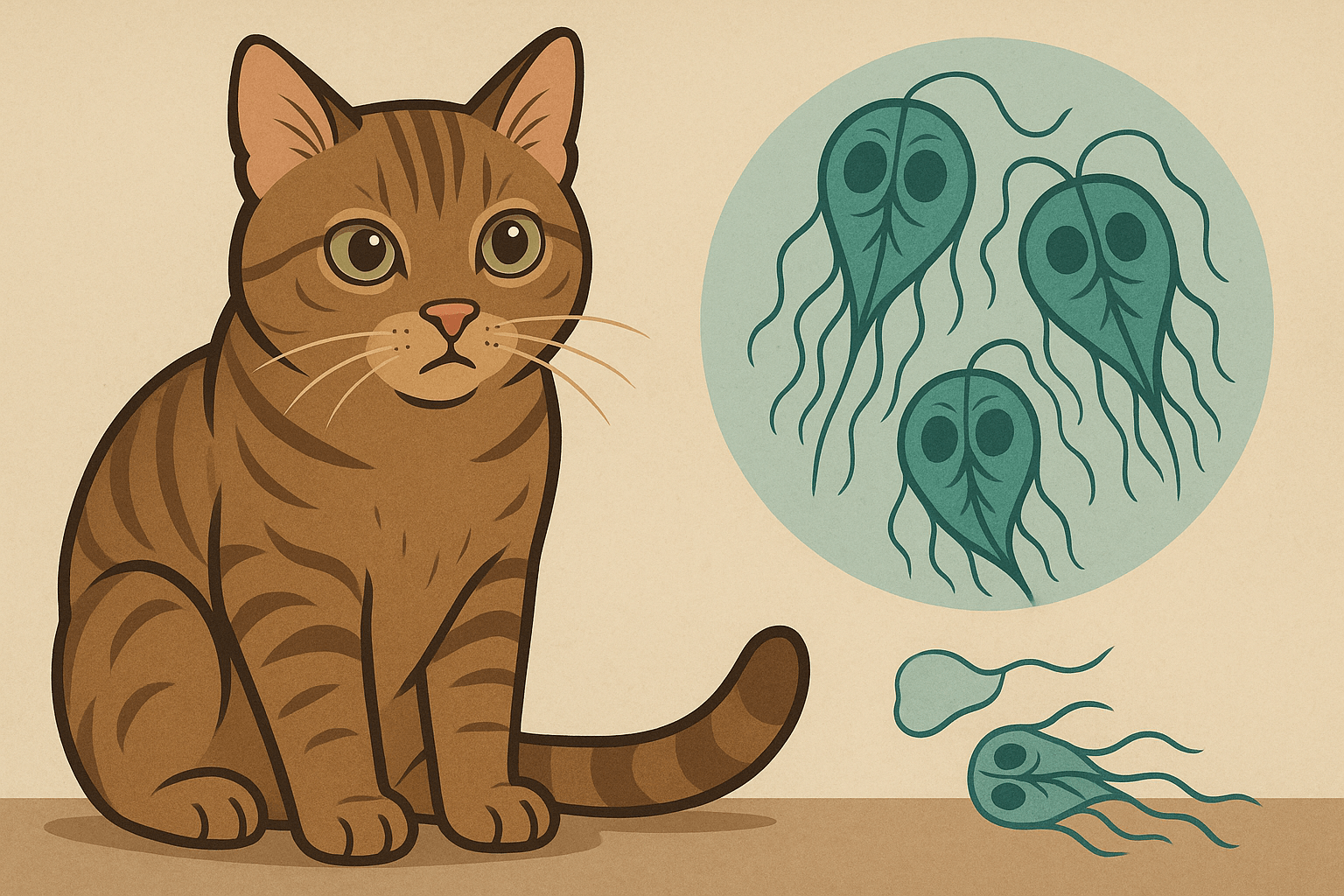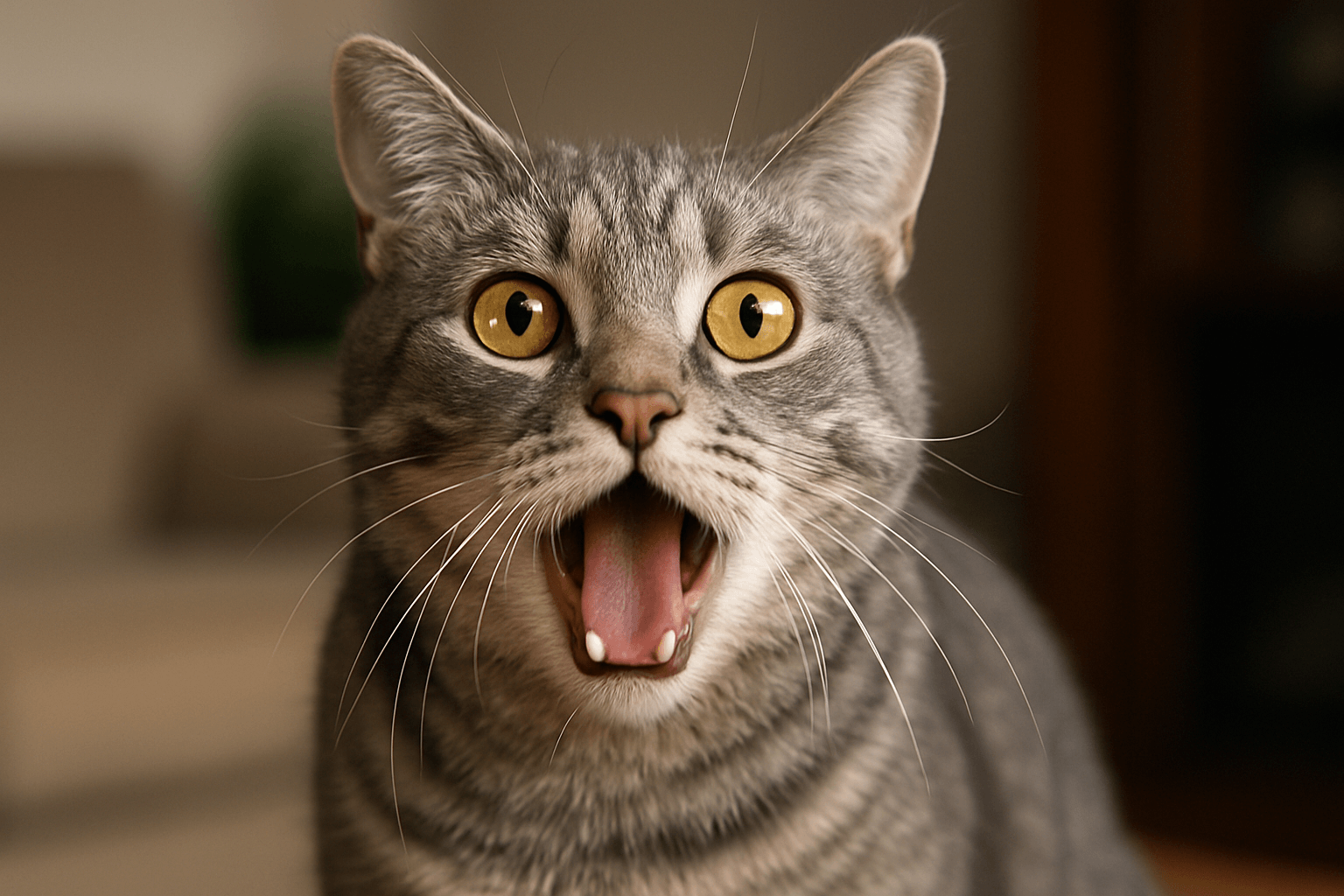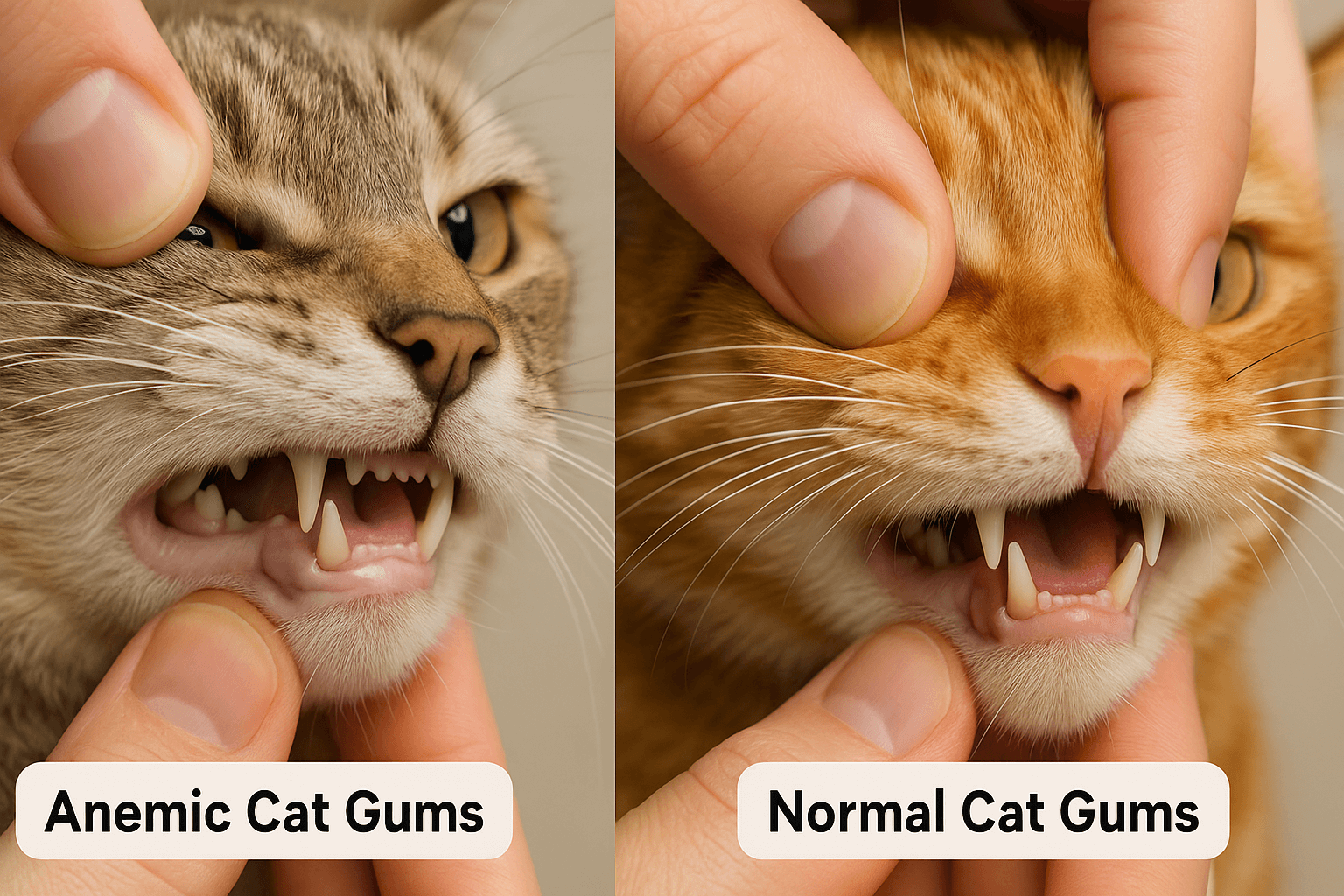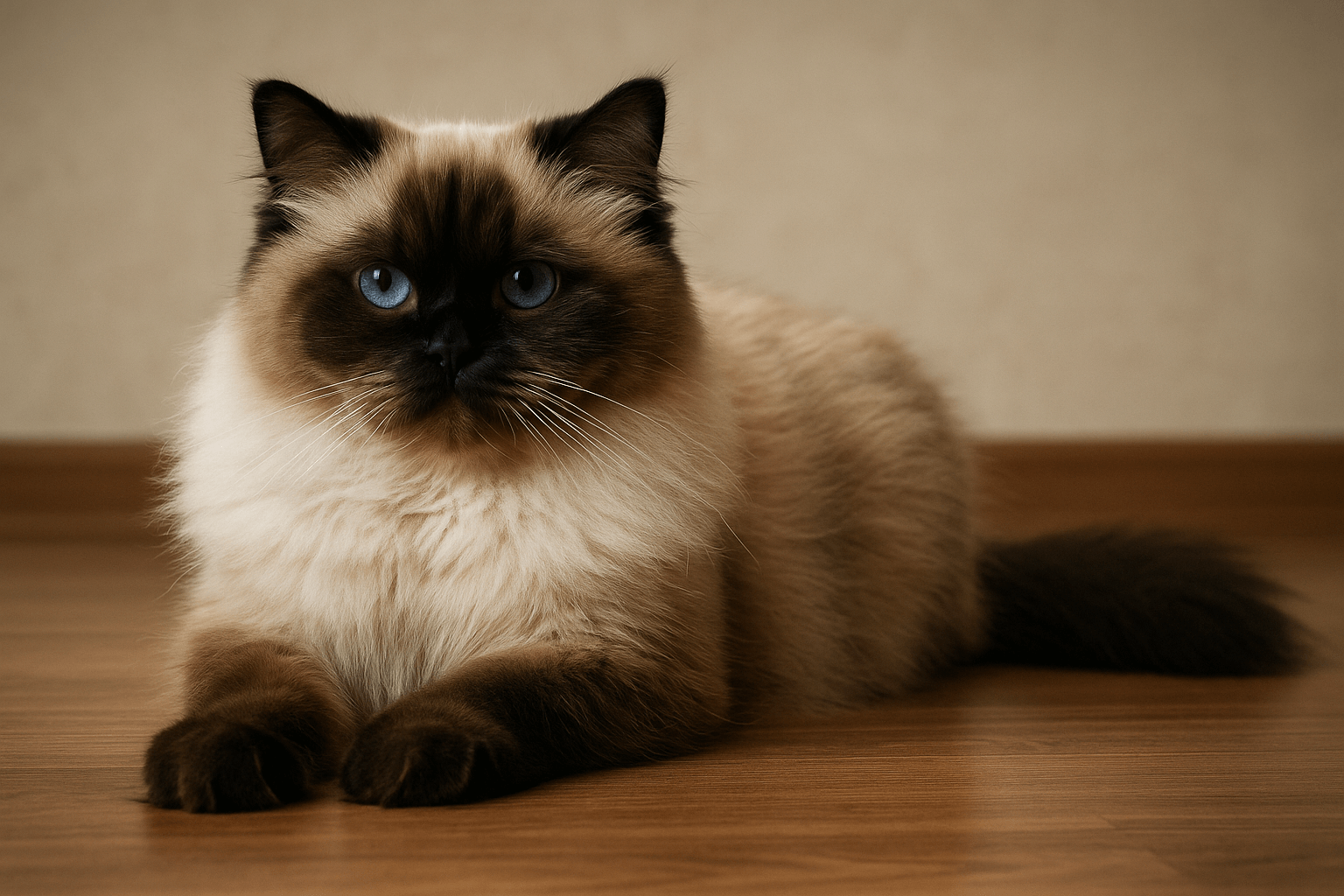Can Cats Eat Pasta?
Cats are curious creatures, and as pet owners, it’s natural to wonder whether human foods like pasta are safe for them. While pasta is a staple in many households, it’s important to understand how it fits into a feline diet. Cats have unique nutritional needs as obligate carnivores, meaning their bodies are designed to thrive on animal-based proteins. However, occasional treats from our plates might tempt us to share. So, can cats eat pasta? In this blog post, we’ll explore the answer, potential risks, benefits (if any), and safer alternatives to keep your furry friend healthy and happy.
Is Pasta Safe for Cats? Key Considerations
While pasta isn’t inherently toxic to cats, there are several factors to consider before offering it as a treat. Understanding these aspects ensures your cat’s safety and well-being.
Plain Pasta is Generally Safe:
Unseasoned, cooked pasta in small amounts is unlikely to harm your cat, but it offers no nutritional value for them.Avoid Seasonings and Sauces:
Ingredients like garlic, onions, salt, and creamy sauces can be harmful or even toxic to cats. Always serve pasta plain.Risk of Digestive Upset:
Cats’ digestive systems aren’t designed for grains or carbohydrates, so pasta may cause bloating, gas, or diarrhea if consumed in excess.Choking Hazard:
Large pieces of uncooked or improperly chewed pasta could pose a choking risk, especially for smaller cats.No Nutritional Benefits:
Pasta lacks essential nutrients like taurine and animal protein that cats need to thrive, making it an empty-calorie food for them.
While pasta isn’t dangerous in moderation, it should never replace a balanced, species-appropriate diet for your cat.
Potential Risks of Feeding Pasta to Cats
Feeding pasta to your cat, especially in large quantities or with added ingredients, can lead to several health concerns. Here’s what you need to watch out for.
Obesity Risk:
Pasta is high in carbohydrates, which can contribute to weight gain and obesity if fed regularly.Allergic Reactions:
Some cats may develop sensitivities or allergies to wheat-based pasta, leading to skin irritation or digestive issues.Toxic Ingredients in Sauces:
Many pasta sauces contain garlic, onion powder, or dairy, all of which are harmful to cats and should be avoided entirely.Nutrient Imbalance:
Overfeeding pasta can displace essential nutrients in your cat’s diet, potentially leading to deficiencies over time.Gastrointestinal Blockages:
Swallowing large chunks of pasta without chewing properly could cause blockages in your cat’s digestive tract.
These risks highlight why moderation and careful preparation are crucial when considering pasta as an occasional treat.
Check this guide 👉Can Cats Eat Bell Peppers? Best 7 Expert Tips!
Check this guide 👉Can Cats Eat Kiwi? Best 7 Expert Tips!
Check this guide 👉Can Cats Eat Olive Oil? Best 7 Expert Tips!
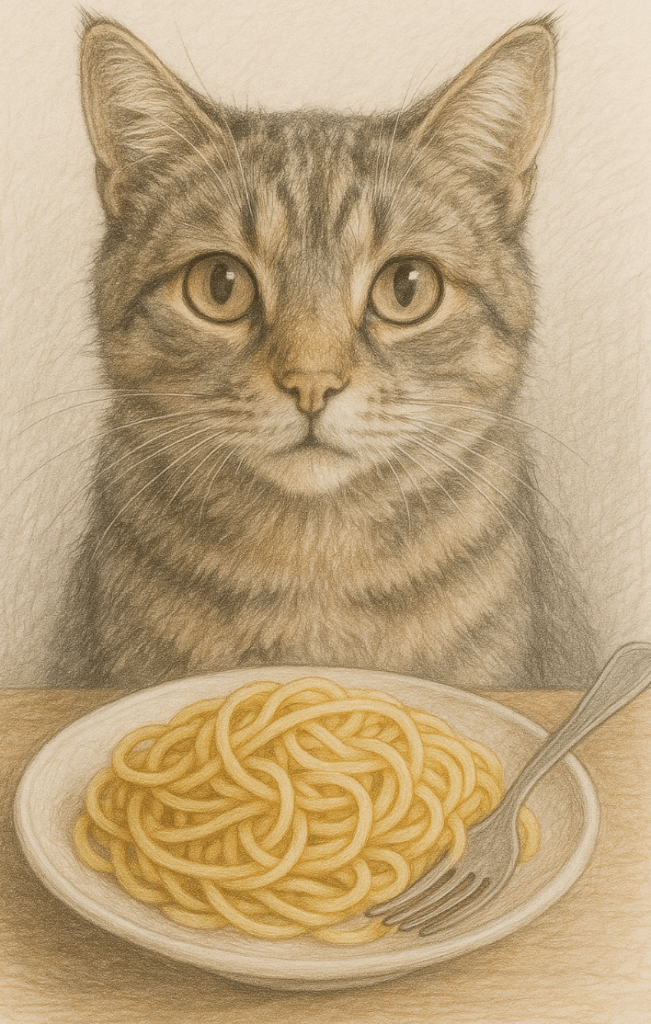
Safe Pasta Options for Cats | Unsafe Pasta Choices for Cats |
|---|---|
Plain, cooked pasta (small portions) | Pasta with garlic or onion seasoning |
Gluten-free pasta (optional) | Creamy or cheesy pasta dishes |
Soft, bite-sized pieces | Raw or undercooked pasta |
Unsalted and unseasoned pasta | Spicy or heavily seasoned pasta |
Occasional treat only | Large servings or frequent feeding |
How to Safely Introduce Pasta to Your Cat
If you decide to offer pasta to your cat, follow these guidelines to minimize risks and ensure their safety.
Choose Plain Pasta Only:
Avoid adding salt, butter, oil, or any seasonings that could upset your cat’s stomach.Cook Thoroughly:
Ensure the pasta is fully cooked and soft enough for easy digestion, reducing the risk of choking.Cut into Small Pieces:
Break the pasta into bite-sized bits to prevent choking and make it easier for your cat to eat.Limit Portion Sizes:
Offer just a small taste—no more than a teaspoon or two—as an occasional treat rather than a regular snack.Monitor for Reactions:
Watch for signs of digestive upset, such as vomiting or diarrhea, after introducing pasta to your cat’s diet.
By following these steps, you can safely incorporate pasta as an occasional indulgence for your feline friend.
Healthier Alternatives to Pasta for Cats
Instead of pasta, consider offering healthier, cat-friendly treats that align with their dietary needs. These alternatives provide better nutrition and satisfaction.
Cooked Chicken or Turkey:
Lean meats are rich in protein and taurine, essential nutrients for cats.Boiled Fish (without bones):
Fish like salmon or tuna can be a tasty and nutritious treat in moderation.Pumpkin Puree:
Plain pumpkin puree aids digestion and can help relieve constipation or diarrhea.Cat Grass or Herbs:
Some cats enjoy nibbling on cat grass or catnip, which are safe and stimulating options.Commercial Cat Treats:
High-quality cat treats formulated specifically for felines ensure proper nutrition and safety.
These alternatives cater to your cat’s carnivorous nature while providing variety and enrichment.
Common Mistakes to Avoid When Feeding Pasta to Cats
Feeding pasta to your cat requires caution to avoid mistakes that could harm their health. Here are some pitfalls to steer clear of.
Feeding Large Portions:
Giving too much pasta can overwhelm your cat’s digestive system and lead to discomfort or illness.Adding Harmful Ingredients:
Seasonings, sauces, or toppings like cheese can irritate your cat’s stomach or even be toxic.Offering Raw Pasta:
Uncooked pasta is hard to chew and digest, posing a choking hazard or causing gastrointestinal blockages.Making It a Regular Treat:
Feeding pasta frequently can disrupt your cat’s balanced diet and lead to nutrient deficiencies.Ignoring Allergies:
Some cats may have sensitivities to wheat or gluten, so monitor for adverse reactions closely.
Avoiding these mistakes ensures your cat enjoys pasta safely, if at all.
Signs Your Cat May Not Tolerate Pasta Well
Even if pasta is considered safe, some cats may struggle to digest it or experience adverse reactions. Watch for these warning signs.
Vomiting or Regurgitation:
If your cat vomits shortly after eating pasta, it may indicate intolerance or digestive distress.Diarrhea or Loose Stools:
Gastrointestinal upset often manifests as diarrhea, signaling that pasta doesn’t agree with your cat.Lethargy or Discomfort:
A lack of energy or visible discomfort could suggest an allergic reaction or bloating.Excessive Gas or Bloating:
Fermentation of carbohydrates in the gut can lead to uncomfortable gas or swelling.Refusal to Eat More:
If your cat rejects pasta or shows disinterest, respect their preferences and avoid forcing them to eat it.
Recognizing these signs allows you to act promptly and protect your cat’s health.
Tips for Transitioning to a Balanced Diet for Your Cat
If you’ve been offering pasta or other human foods, transitioning to a species-appropriate diet is essential for your cat’s long-term health. Here are some tips to guide you.
Consult Your Veterinarian:
Seek professional advice to create a balanced meal plan tailored to your cat’s age, weight, and activity level.Gradual Changes:
Slowly introduce new foods to avoid shocking your cat’s digestive system during the transition.Focus on Protein-Rich Foods:
Prioritize high-protein wet or dry cat foods that mimic the natural prey-based diet of wild cats.Limit Treats:
Keep treats, including pasta, to less than 10% of your cat’s daily caloric intake to maintain balance.Provide Fresh Water:
Hydration is critical for cats, so always ensure they have access to clean, fresh water alongside their meals.
By focusing on a balanced diet, you can support your cat’s overall health and vitality for years to come.
Frequently Asked Questions About Cats and Pasta
Can kittens eat pasta?
Kittens should avoid pasta altogether, as their developing digestive systems are even less equipped to handle grains and carbs.
What happens if my cat eats too much pasta?
Overeating pasta can lead to digestive upset, obesity, or nutrient imbalances over time.
Is gluten-free pasta safe for cats?
Gluten-free pasta is safer than traditional wheat-based pasta, but it still lacks nutritional value for cats.
Can I mix pasta with cat food?
Mixing pasta with cat food dilutes its nutritional content and isn’t recommended for long-term feeding.
Are there any health benefits to feeding pasta?
No, pasta offers no significant health benefits for cats and should only be given sparingly as a treat.
Prioritizing Your Cat’s Health When Offering Human Foods
While cats can technically eat plain, cooked pasta in small amounts, it’s not a food that provides any real nutritional benefit for them. As obligate carnivores, their diets should focus on high-quality animal proteins and fats rather than carbohydrates or grains. By understanding the risks and limitations of feeding pasta—and opting for healthier alternatives—you can ensure your cat stays happy, healthy, and thriving. Remember, moderation and mindfulness are key when sharing human foods with your feline companion.
Giardia in Cats: Best 7 Expert Tips! Discover expert advice on identifying, treating, and preventing giardia in cats to ensure your feline stays happy and healthy.
Cat Hyperventilating: Best 7 Expert Tips! Discover signs, causes, and solutions for cat hyperventilation. Learn how to calm your cat and when to seek veterinary care for their breathing issues.
Anemic Cat Gums vs Normal: Best 7 Expert Tips! Learn to spot signs of anemia in cats, understand gum health, and ensure your feline stays happy and healthy with expert advice.
Himalayan Cat Size: Best 7 Expert Tips! Discover expert advice on Himalayan cat size, growth factors, care tips, and how to ensure your feline stays healthy and happy.

